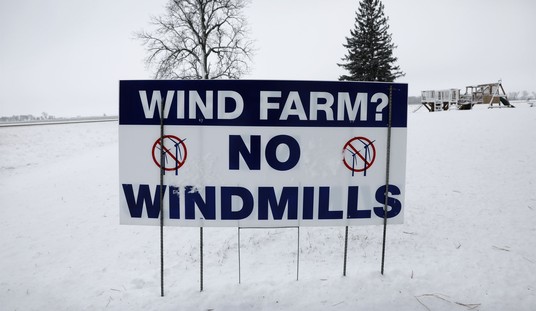A smoking gun? Not quite, writes Washington Post columnist Josh Rogin, but it certainly seems like a curious coincidence. According to a State Department cable Rogin obtained, officials sent up warnings less than two years before the outbreak of COVID-19 about safety and competence issues at a biological-containment lab in Wuhan. Specifically, they warned about the risk of a breakout of the bat-based coronaviruses being studied there — and it wasn’t the first warning, either:
In January 2018, the U.S. Embassy in Beijing took the unusual step of repeatedly sending U.S. science diplomats to the Wuhan Institute of Virology (WIV), which had in 2015 become China’s first laboratory to achieve the highest level of international bioresearch safety (known as BSL-4). WIV issued a news release in English about the last of these visits, which occurred on March 27, 2018. The U.S. delegation was led by Jamison Fouss, the consule general in Wuhan, and Rick Switzer, the embassy’s counselor of environment, science, technology and health. Last week, WIV erased that statement from its website, though it remains archived on the Internet.
What the U.S. officials learned during their visits concerned them so much that they dispatched two diplomatic cables categorized as Sensitive But Unclassified back to Washington. The cables warned about safety and management weaknesses at the WIV lab and proposed more attention and help. The first cable, which I obtained, also warns that the lab’s work on bat coronaviruses and their potential human transmission represented a risk of a new SARS-like pandemic.
“During interactions with scientists at the WIV laboratory, they noted the new lab has a serious shortage of appropriately trained technicians and investigators needed to safely operate this high-containment laboratory,” states the Jan. 19, 2018, cable, which was drafted by two officials from the embassy’s environment, science and health sections who met with the WIV scientists.
Everyone agrees that the COVID-19 virus came from bats, but that doesn’t preclude the lab as its source either, Rogin points out. The lab specifically worked with bat coronaviruses to determine what could be done to deal with them if they made the leap to humans. The cables all but predicted exactly the kind if disaster that could take place at that lab. That’s one hell of a coincidence, especially given its location in the known epicenter of the Wuhan Flu.
For now, the prevailing theory has been that the leap occurred naturally, in the “wet markets” which have long been criticized as potential pandemic time bombs. However, if the containment at the facility failed from incompetence or malice, then it wouldn’t look any different than an environmental-based cross-contamination hypothesized thus far. According to Rogin’s sources at Foggy Bottom, there’s about the same amount of hard evidence for either hypothesis, which is to say none:
“The idea that is was just a totally natural occurrence is circumstantial. The evidence it leaked from the lab is circumstantial. Right now, the ledger on the side of it leaking from the lab is packed with bullet points and there’s almost nothing on the other side,” the official said.
As my colleague David Ignatius noted, the Chinese government’s original story — that the virus emerged from a seafood market in Wuhan — is shaky. Research by Chinese experts published in the Lancet in January showed the first known patient, identified on Dec. 1, had no connection to the market, nor did more than one-third of the cases in the first large cluster. Also, the market didn’t sell bats.
This doesn’t necessarily mean the pandemic started with a biological-research accident, but it seems clear that we don’t know enough to rule it out, either. We can rule out a deliberate release, almost certainly, given the fact that it was released in the same vicinity as the lab and its impact on China is likely much more overwhelming than they will admit. However, the real-life unfolding of this pandemic is close enough to the State Department’s warnings — which go all the way back to 2014, according to Rogin — to make them look more like prophecy in hindsight.
This also would explain why China has been lying about the pandemic since it started and why it rushed to corner the market on PPE early on. It also explains why China has engaged in such a strenuous PR campaign to push the blame onto Italy, the US Army, and anyone else it can imagine. And it sheds light on the curious decision from Beijing to allow the wet markets to re-open as well. After all, if they know the wet market and environmental transfer wasn’t the problem, why shut down that part of their local economies?
It’s not a smoking gun … but it’s certainly a very interesting piece of circumstantial evidence. This is a good reminder to keep an open mind until all of the facts emerge.
Update: Refreshed with a new headline at 9:10 am ET.








Join the conversation as a VIP Member